Mao Zedong’s Former Residence: A Glimpse into Revolutionary China
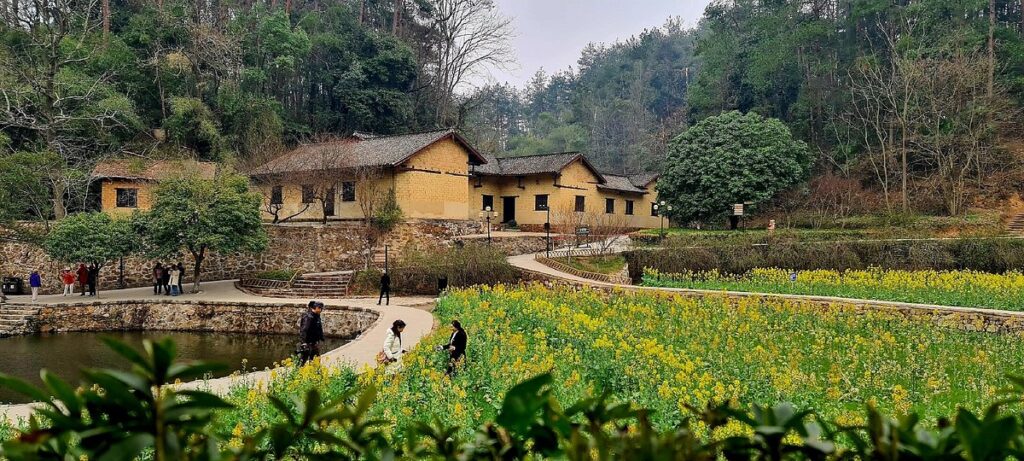
An Essential Guide to Visiting Former Residence Of Mao Zedong
In This Guide
- An Essential Guide to Visiting Former Residence Of Mao Zedong
- The Rich History and Legends of Former Residence Of Mao Zedong
- Main Highlights: What You Absolutely Can’t Miss
- Planning Your Visit: A Practical Guide
- Tickets: Prices, Booking, and Tips
- How to Get There: A Complete Transportation Guide
- Local Cuisine and Accommodation Nearby
- Frequently Asked Questions
- Final Thoughts on Your Trip
Visiting the Former Residence of Mao Zedong in Shaoshan is not just a journey to a historical site; it’s an immersive experience that offers profound insights into the early life of one of the most influential figures in modern history. Nestled in the picturesque countryside of Hunan Province, this humble abode is where Mao spent his formative years, cultivating the ideals that would shape a nation.
As you approach the residence, you’ll find a charming village setting surrounded by lush landscapes and vibrant fields. The house itself, built predominantly from mud and timber, stands as a testament to Mao’s middle-peasant upbringing. Here, he lived with his family until he left for further schooling in Changsha at the age of 16. This intimate glimpse into his childhood is a compelling reminder of the simple beginnings from which his revolutionary journey would unfold.
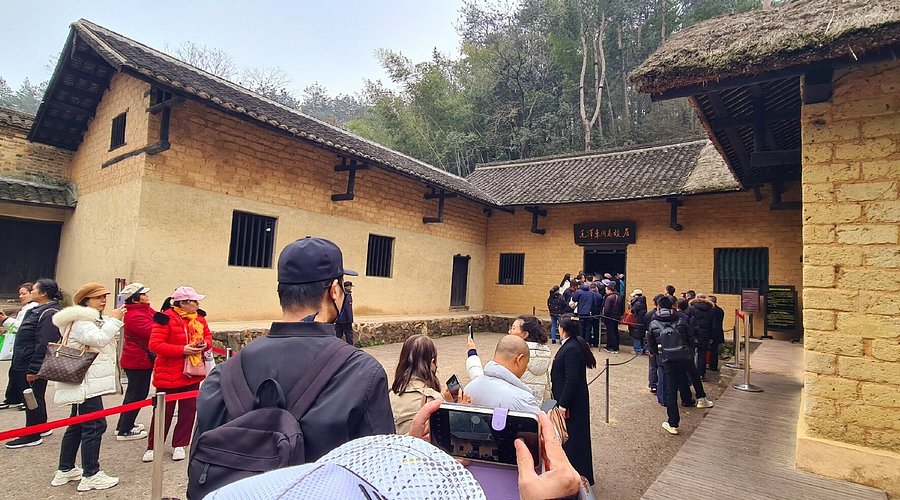
Former Residence Of Mao Zedong.
The site is a significant pilgrimage for both domestic and international visitors, drawing those eager to understand the complexities of Mao’s legacy. Expect to encounter bustling crowds, particularly during peak tourist seasons, as many come to appreciate the historical importance of this residence. With its well-preserved artifacts and informative displays, the Former Residence of Mao Zedong allows you to walk in the footsteps of history, engaging with the sights and stories that shaped a leader and a nation.
What to Expect:
– Historical Context: Gain insight into Mao’s early life and the socioeconomic conditions that influenced his thoughts and actions.
– Architectural Features: Explore the traditional layout and design of a peasant home from the early 20th century.
– Visitor Experience: Prepare for long queues, especially during busy seasons; patience will reward you with a unique historical experience.
– Surrounding Attractions: Consider visiting nearby sites, such as the Mao Zedong Memorial Museum and the iconic bronze statue of Mao, to enrich your understanding of his impact.
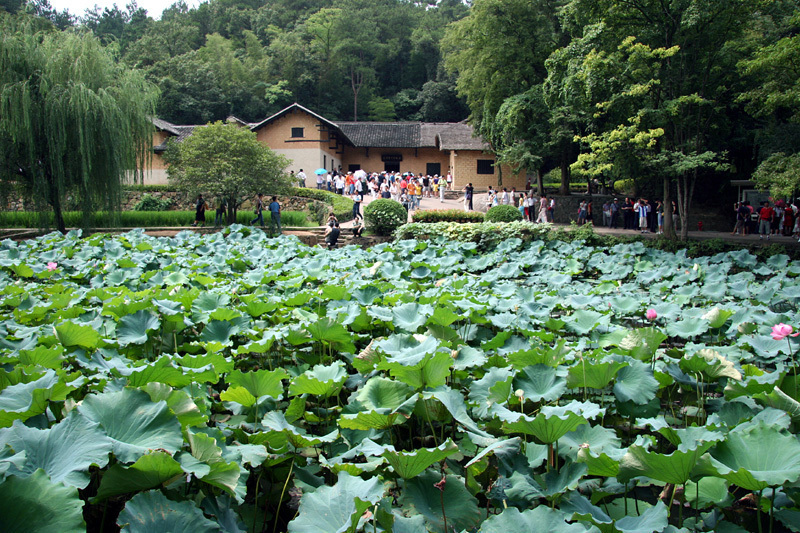
Former Residence Of Mao Zedong.
In summary, a visit to the Former Residence of Mao Zedong is a captivating exploration of history, culture, and the human story behind China’s complex political landscape. Whether you’re a history buff or simply curious about China’s past, this site promises an enlightening experience.
The Rich History and Legends of Former Residence Of Mao Zedong
A Journey Through Time: The Legacy of Mao Zedong’s Former Residence
Nestled in the serene landscape of Shaoshan, the Former Residence of Mao Zedong stands as a testament to the life and times of one of China’s most significant historical figures. This modest abode, where Mao spent his formative years, offers travelers a unique glimpse into the early life of a revolutionary leader whose influence reshaped the destiny of a nation.
The Historical Significance
Mao Zedong was born in 1893 into a peasant family in Shaoshan, a small village in Hunan Province. The residence, constructed primarily of mud and timber, reflects the traditional architecture of rural China during that era. The house serves not only as a childhood home but also as a symbol of Mao’s humble beginnings, growing up amidst the struggles and aspirations of a farming family.
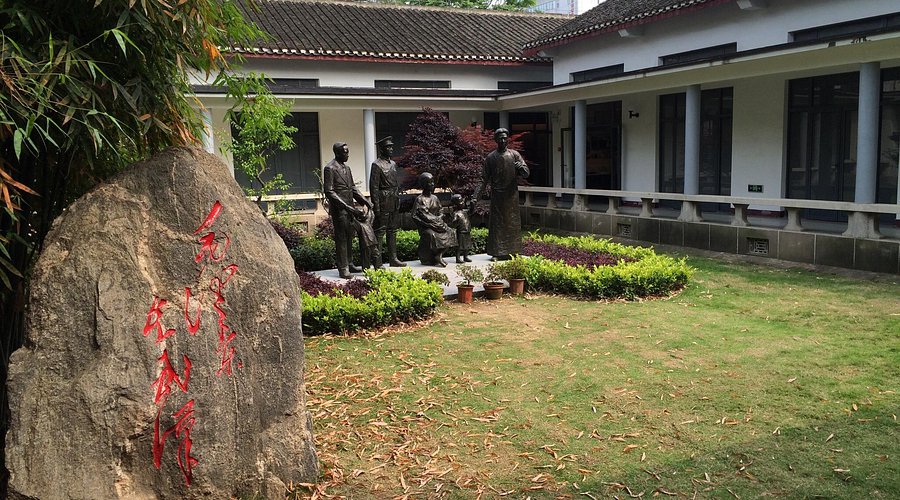
Former Residence Of Mao Zedong.
Until the age of 16, Mao lived here, where he developed a love for learning that would later fuel his revolutionary zeal. His father, a landowner and moneylender, had ambitions for Mao to inherit the family business. Yet, it was education that captivated the young Mao, who often clashed with his father over the direction of his future. This dynamic adds a layer of complexity to the narrative, illustrating the tensions between tradition and the pursuit of knowledge.
Legends and Anecdotes
The residence is steeped in local legends and anecdotes that enrich its historical narrative. One popular story recounts how young Mao would often sneak away from farm chores to indulge in his studies, much to the chagrin of his father. Such tales highlight the early signs of Mao’s rebellious spirit and his dedication to education, foreshadowing his later role as a leader who would challenge the status quo.
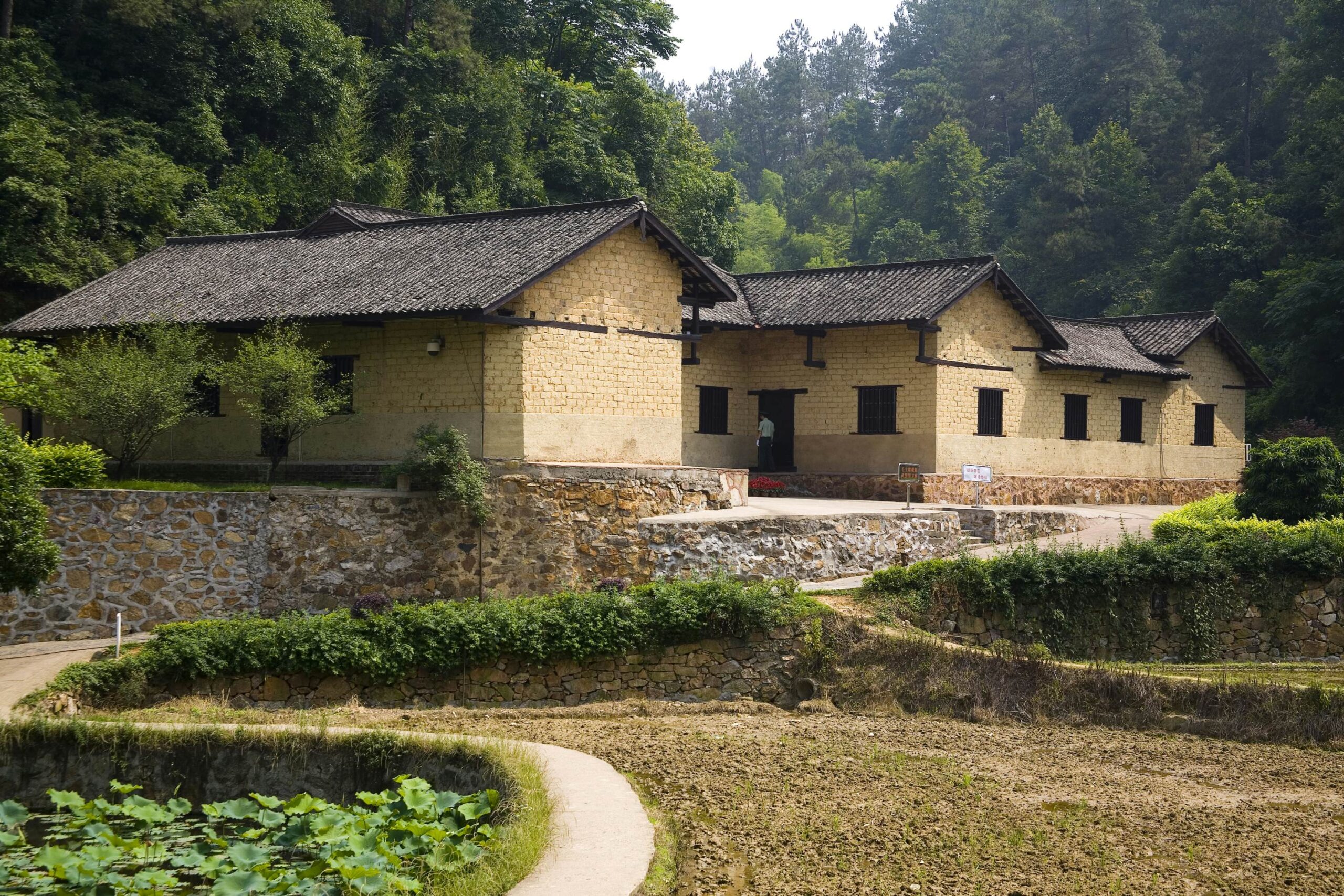
Former Residence Of Mao Zedong.
Visitors to the residence can also explore the surrounding environment, which remains largely untouched. The lush fields, rolling hills, and nearby lotus gardens provide a picturesque backdrop that transports visitors back to Mao’s childhood. The natural beauty of Hunan province is not only a feast for the eyes but also a reminder of the deep connection between Mao’s upbringing and the rural landscape that shaped his worldview.
A Site of Pilgrimage
Today, Mao Zedong’s Former Residence has become a site of pilgrimage for both domestic and international visitors. The house is meticulously preserved, showcasing artifacts from Mao’s childhood, including photographs and personal belongings. Guests often describe the experience as a profound connection to history, as they walk through the same rooms where Mao played, studied, and dreamed of a different future for China.
The site is particularly popular among Chinese tourists who flock to honor the legacy of the revolutionary leader. The bustling atmosphere can lead to long queues, especially during peak tourist seasons. However, the wait is often described as worthwhile, with many travelers expressing a deep sense of pride and nostalgia as they explore the roots of a man who became a pivotal figure in 20th-century history.

Former Residence Of Mao Zedong.
Conclusion
Visiting the Former Residence of Mao Zedong is not merely a historical excursion; it is an exploration of the very essence of Chinese identity and the complexities of its past. This site invites travelers to reflect on the influences of Mao’s early life and to appreciate the cultural narratives that continue to shape contemporary China. Whether you are a history buff or simply curious about the life of one of the world’s most influential leaders, Shaoshan offers an enriching experience that resonates far beyond its rustic charm.
Main Highlights: What You Absolutely Can’t Miss
When visiting the Former Residence of Mao Zedong in Shaoshan, you are stepping into a pivotal chapter of modern Chinese history. This site offers a unique glimpse into the early life of one of the 20th century’s most influential leaders. Here are the main highlights that you absolutely can’t miss during your visit:
1. Mao Zedong’s Childhood Home
The highlight of your visit will undoubtedly be Mao Zedong’s former residence itself. This modest structure, primarily built of mud and timber, served as Mao’s home until he left for school at the age of 16. As you wander through the rooms, you can imagine the young Mao growing up in a family of middle peasants, surrounded by the same rural landscapes that shaped his worldview. Be prepared for long queues, especially during peak tourist seasons, as this site’s historical significance attracts many visitors.
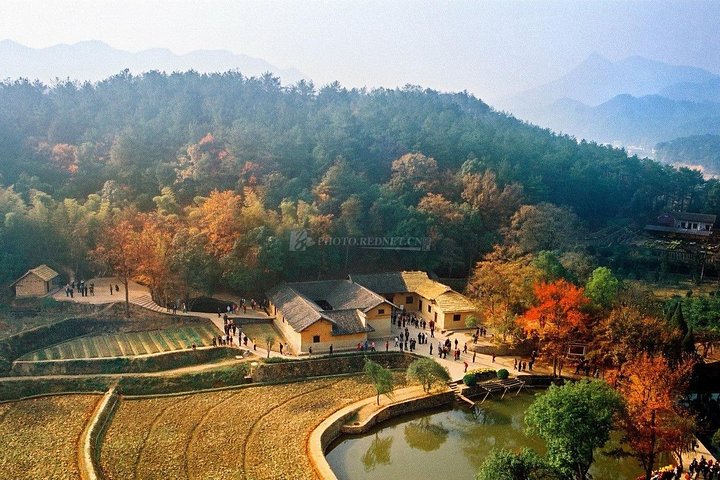
Former Residence Of Mao Zedong.
2. The Surrounding Parklands
After exploring the residence, take time to stroll through the beautifully landscaped park surrounding the site. The area is adorned with lotus gardens and scenic views of the nearby mountains, providing a peaceful contrast to the historical weight of the residence. It’s a perfect spot for photography, especially during the blooming season when the flowers are at their most vibrant.
3. Mao Zedong Memorial Museum
Just a short walk from the former residence, the Mao Zedong Memorial Museum offers deeper insights into his life and legacy. The museum features various artifacts, photographs, and exhibits that chronicle both his early years and his significant impact on China and the world. This museum is a must-visit for anyone looking to understand the complexities of Mao’s leadership and the revolutionary era he influenced.
4. Mao Zedong Bronze Statue Square
No trip to Shaoshan is complete without a visit to the iconic bronze statue of Chairman Mao. Standing proudly in a public square, this statue symbolizes Mao’s enduring presence in Chinese culture. Visitors often gather here for photographs and to reflect on the historical significance of the location.
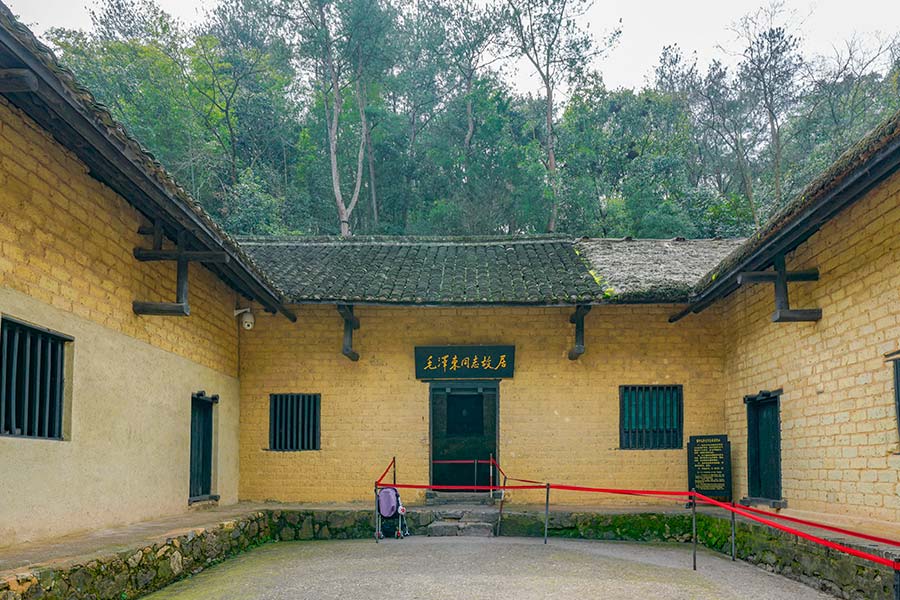
Former Residence Of Mao Zedong.
5. Ancestral Sites & Historical Context
Explore additional nearby sites related to Mao’s ancestry, such as Mao’s Family Ancestral Hall and the old-style private school he attended. These locations further enrich your understanding of his roots and the environment that helped shape his early ideology.
6. Local Cuisine
While in Shaoshan, don’t miss the opportunity to savor local Hunan cuisine. Known for its bold flavors and liberal use of chili, Hunan food is an integral part of the cultural experience. Look for local eateries where you can enjoy traditional dishes, perhaps even sampling Mao’s favorite foods.
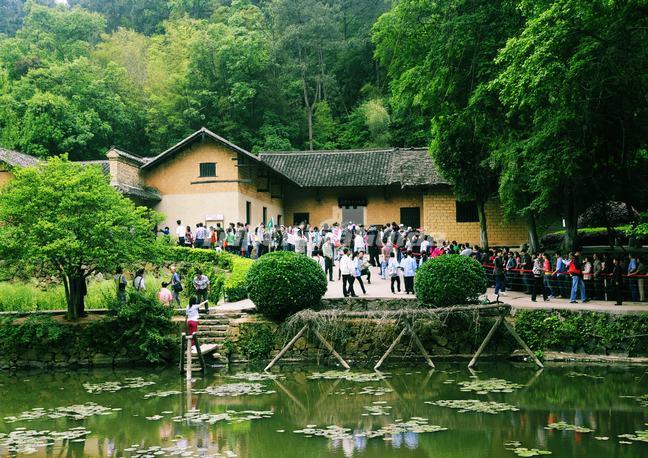
Former Residence Of Mao Zedong.
7. Guided Tours for Enhanced Insight
Consider joining a guided tour to fully appreciate the historical context of the Former Residence and its surrounding sites. Knowledgeable guides can provide fascinating anecdotes and deeper insights into Mao’s life, making your visit even more enlightening.
Practical Tips
- Operating Hours: The site is open from 8:30 AM to 4:00 PM daily.
- Entry Requirements: Be prepared to store large bags or cameras as they are not allowed inside the residence. Bring your passport, as it’s often required for entry.
- Best Time to Visit: Spring and autumn are ideal for visiting, offering pleasant weather and beautiful natural scenery.
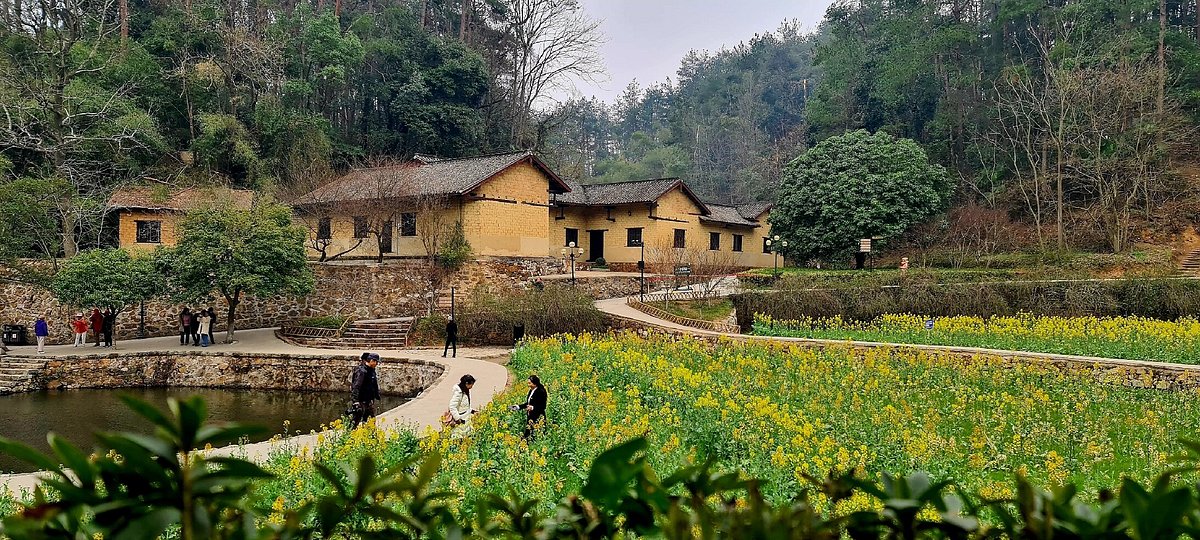
Former Residence Of Mao Zedong.
Visiting Mao Zedong’s Former Residence is more than just a historical tour; it’s a journey through the formative years of a leader whose actions still resonate in China today. Embrace the experience, absorb the culture, and reflect on the complexities of history as you stand in the very place where it began.
Planning Your Visit: A Practical Guide
Planning Your Visit to Mao Zedong’s Former Residence
Visiting the Former Residence of Mao Zedong in Shaoshan offers a unique glimpse into the early life of one of China’s most significant historical figures. As you plan your journey to this site, here are some essential tips and information to enhance your experience.
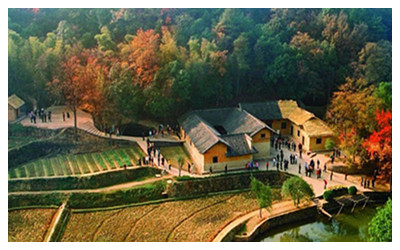
Former Residence Of Mao Zedong.
Location and Getting There
- Address: Shaoshan Country, Shaoshan 411300, China.
- Transport: The residence is accessible by train or bus from Changsha, the capital of Hunan Province. Private tours are also available, which provide a more personalized experience.
Opening Hours
- The site is open daily from 8:30 AM to 4:00 PM. Be sure to arrive early, as the residence can attract long lines, especially during weekends and public holidays.

Former Residence Of Mao Zedong.
Admission Information
- Entry Fee: Admission is generally free, but there may be fees for guided tours or special exhibitions.
- Restrictions: Visitors are required to store large bags and cameras in provided lockers before entering the residence, so plan accordingly.
What to Expect
- Historical Insight: The residence, a traditional mud and timber house, offers an authentic look at Mao’s early life. Visitors can explore the rooms where he lived until the age of 16, providing context to his upbringing and the socio-economic conditions of his family.
- Surrounding Attractions: Take time to explore the nearby Shaoshan Mao Zedong Memorial Museum and Mao Zedong Bronze Statue Square, which enhance your understanding of his legacy. The picturesque surroundings of mountains and fields add to the charm of the visit.
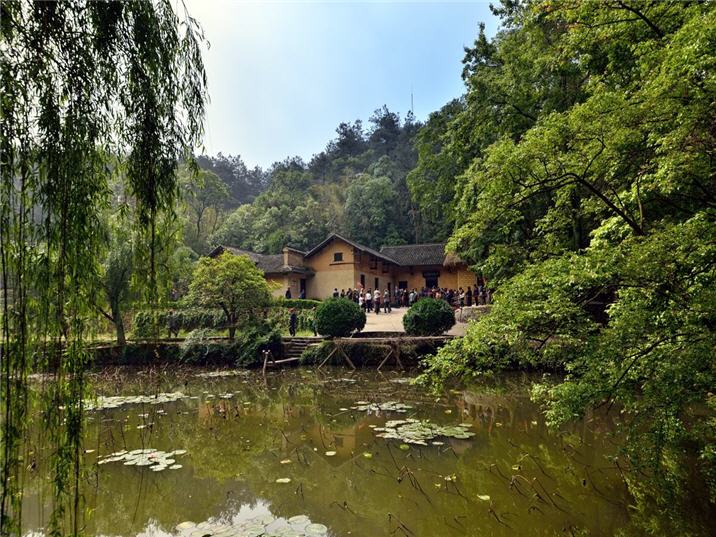
Former Residence Of Mao Zedong.
Tips for a Smooth Visit
- Best Time to Visit: Spring and autumn are ideal for visiting due to pleasant weather. Avoid peak summer days when temperatures can soar, leading to uncomfortable wait times.
- Guided Tours: Consider hiring a licensed guide to enrich your experience. A guide can provide deeper insights into Mao’s life and the historical significance of the residence.
- Crowd Management: To avoid long queues, try to visit early in the day. Many domestic tourists frequent the site, especially on weekends.
Nearby Experiences
- Changsha Food Tours: Pair your visit with a culinary adventure in Changsha. Local food tours offer a taste of Hunan’s famous spicy cuisine.
- Cultural Excursions: Explore nearby attractions such as the Dripping Water Cave and the Liu Shaoqi Residence for a broader perspective on Chinese history.
Practical Considerations
- Language: While many guides can speak English, brushing up on basic Mandarin phrases can enhance your interaction with locals.
- Currency: Ensure you have Chinese Yuan (CNY) for any purchases, as some places may not accept international credit cards.
- Safety and Etiquette: Be respectful of the site’s historical significance. Maintain a quiet demeanor during your visit, and follow all posted guidelines.
Conclusion
Visiting Mao Zedong’s Former Residence is more than just a historical excursion; it’s an opportunity to reflect on China’s past and its impact on the present. By planning ahead and considering these practical tips, you can ensure a meaningful and enjoyable visit to this significant cultural landmark.
Tickets: Prices, Booking, and Tips
Visiting Mao Zedong’s Former Residence in Shaoshan offers a unique glimpse into the early life of one of China’s most significant historical figures. Planning your visit carefully will ensure an enriching experience filled with insights into Mao’s childhood and the cultural heritage of the region. Here’s what you need to know about tickets, booking, and some handy tips for your trip.
Ticket Information
- Admission Fee: Entry to Mao Zedong’s Former Residence is typically free of charge. However, special guided tours or additional exhibits may have associated costs, so it’s wise to check ahead.
- Opening Hours: The residence is open from 8:30 AM to 4:00 PM, every day of the week. It is advisable to arrive early, especially during peak tourist seasons, to avoid long lines.
- Parking: There is usually ample parking available for those driving to the site, making it accessible for visitors from nearby cities, including Changsha.
Booking Options
- Guided Tours: While it is possible to visit the residence without a guide, hiring a licensed guide can enhance your understanding of the historical context. Many local tour operators offer packages that include transportation and a guided experience.
- Online Reservations: Some tour companies allow for online booking, which can save time and ensure you have a spot, especially during busy seasons. If you prefer a private experience, consider booking a tailored tour that fits your interests.
Tips for Your Visit
-
Expect Crowds: The residence is a popular destination, particularly among domestic tourists. Be prepared for potential queues, especially during weekends and holidays. Visiting early in the morning can help you beat the rush.
-
Photography Regulations: While the exterior and surrounding areas may be photogenic, photography inside the residence is often restricted. Be sure to check the rules and leave large bags in lockers provided at the entrance.
-
Plan for Weather: Shaoshan experiences a humid subtropical climate. Spring and autumn are the best times to visit, offering pleasant weather for exploring the site and the surrounding natural beauty.
-
Combine Visits: Consider pairing your visit to Mao Zedong’s Former Residence with nearby attractions, such as the Shaoshan Mao Zedong Memorial Museum and the Bronze Statue of Mao Zedong, for a more comprehensive understanding of his legacy.
-
Cultural Respect: As a site of historical significance, it’s important to be respectful during your visit. Engage with the exhibits thoughtfully and consider the impact Mao Zedong had on China’s history.
By following these tips and planning your visit to Mao Zedong’s Former Residence in Shaoshan, you’ll not only gain a deeper appreciation for this pivotal figure in Chinese history but also enjoy the rich cultural tapestry of Hunan Province.
How to Get There: A Complete Transportation Guide
Navigating to Mao Zedong’s Former Residence: Your Complete Transportation Guide
Visiting the former residence of Mao Zedong in Shaoshan offers an insightful glimpse into the early life of one of China’s most significant historical figures. Located in Hunan Province, this site is not only a cultural landmark but also a testament to the rural backdrop that shaped Mao’s formative years. Here’s how to make the journey to this fascinating destination.
Getting to Shaoshan
1. By Air:
The nearest major airport to Shaoshan is Changsha Huanghua International Airport (CSX), located approximately 90 kilometers (56 miles) away. This airport serves both domestic and international flights, making it a convenient entry point for international travelers.
- From the Airport to Shaoshan:
- Taxi: The most straightforward option is to take a taxi directly from the airport to Shaoshan. The journey takes about 1.5 hours and costs around CNY 200-300 (approximately USD 30-45).
- Public Bus: For a more economical choice, you can take the airport shuttle bus to Changsha city center and then switch to a bus heading to Shaoshan. This method is cheaper but may take longer, around 2-3 hours in total.
2. By Train:
Changsha also has a well-developed rail network. Visitors can take a train to Shaoshan Railway Station or Shaoyang Railway Station, depending on the service availability.
- From Changsha: Trains from Changsha to Shaoshan run frequently. The journey lasts approximately 1 hour. Once you arrive at Shaoshan Railway Station, you can take a taxi or a local bus to Mao Zedong’s Former Residence, which is about a 15-minute drive away.
3. By Bus:
Buses to Shaoshan depart regularly from Changsha’s main bus terminals, such as the Changsha West Bus Station.
- The bus ride typically takes between 1.5 to 2 hours, and tickets cost around CNY 40-60 (about USD 6-10). Once in Shaoshan, local transportation options such as taxis or electric minibuses can take you directly to the residence.
Local Transportation in Shaoshan
Once you’ve arrived in Shaoshan, getting around is relatively easy:
-
Walking: The Former Residence is situated close to several other attractions, including the Mao Zedong Memorial Museum and the bronze statue of Mao, making it feasible to explore on foot.
-
Local Taxis and Rideshares: Taxis are available, and rideshare apps like DiDi can also be used for convenient transport within the town.
-
Guided Tours: Many local travel agencies offer guided tours from Changsha to Shaoshan, which often include transportation, entry fees, and knowledgeable guides. This option is excellent for those who prefer a structured experience.
Tips for Your Visit
-
Timing: The residence is open from 8:30 AM to 4:00 PM, and it’s advisable to arrive early to avoid long queues, especially during weekends and holidays.
-
Baggage Restrictions: Note that large bags and cameras are generally not allowed inside the residence; lockers are available for storage.
-
Language: While many local guides speak basic English, hiring a licensed guide can enhance your experience, providing deeper insights into Mao’s life and the historical context.
Exploring Mao Zedong’s Former Residence will not only enrich your understanding of Chinese history but also offer a unique perspective on the cultural and historical landscape of Hunan Province. Safe travels!
Local Cuisine and Accommodation Nearby
When visiting the Former Residence of Mao Zedong in Shaoshan, you’ll not only immerse yourself in the historical significance of this site but also have the chance to savor the region’s delightful cuisine and find comfortable accommodations nearby. Here’s a glimpse into what awaits you.
Local Cuisine
Exploring Shaoshan offers a unique opportunity to indulge in Hunan cuisine, known for its bold flavors and use of fresh ingredients. Here are some local dishes and eateries to consider:
- Spicy Steamed Fish (剁椒鱼头): A signature dish of Hunan, made with a whole fish head steamed with chopped chili peppers. It’s a must-try for spice lovers.
- Chairman Mao’s Favorite Dish (毛氏红烧肉): This braised pork dish is rich and flavorful, traditionally served with steamed rice.
- Hot and Sour Noodles (酸辣粉): A popular street food option, these rice noodles are dressed in a spicy and tangy sauce, often garnished with peanuts and herbs.
Recommended Eateries
- Shao Shan Restaurant (韶山饭店): Located near the former residence, this restaurant serves a variety of local Hunan dishes in a casual setting. It’s perfect for trying several specialties at once.
- Mao Zedong’s Family Kitchen (毛家饭店): A small, locally-run eatery known for its traditional recipes, including the famous red-braised pork. The ambiance is cozy, and the prices are reasonable.
- Local Street Vendors: Don’t miss the chance to sample street food just outside the park. Vendors sell everything from spicy skewers to fried dumplings, providing a true taste of local life.
Accommodation Nearby
When it comes to lodging, Shaoshan offers a range of options to suit different budgets and preferences. Whether you prefer luxury or simplicity, you’ll find something that meets your needs.
- Shao Shan Hotel (韶山大酒店): This hotel offers comfortable rooms and modern amenities while being conveniently located close to the main attractions. It’s a great choice for travelers seeking comfort after a day of exploration.
- Hunan Shaoshan Mao Zedong Hotel (湖南韶山毛泽东大酒店): A mid-range option featuring spacious rooms and a restaurant serving local dishes. The hotel’s proximity to the former residence makes it an ideal base for sightseeing.
- Guesthouses & Homestays: For a more intimate experience, consider staying in a guesthouse or homestay. This option allows you to connect with locals and often provides a more authentic feel of Shaoshan.
With its rich history, mouthwatering cuisine, and hospitable accommodations, Shaoshan is an unforgettable destination for any traveler interested in the life of Chairman Mao Zedong and the broader tapestry of Chinese history. Enjoy your journey!
Frequently Asked Questions
Frequently Asked Questions about Mao Zedong’s Former Residence
1. Where is Mao Zedong’s Former Residence located?
Mao Zedong’s Former Residence is situated in Shaoshan, Hunan Province, China. This quaint village is not only the birthplace of Mao but also a significant historical site that attracts numerous visitors interested in Chinese history and culture.
2. What are the opening hours of the residence?
The residence is open to visitors from 8:30 AM to 4:00 PM every day of the week. However, it’s advisable to arrive early, as the site can get quite busy, especially during weekends and public holidays.
3. Is there an entrance fee?
There is no entrance fee to visit Mao Zedong’s Former Residence, making it an accessible destination for all travelers interested in exploring Mao’s early life and the socio-political context of his upbringing.
4. What should I expect during my visit?
Visitors can look forward to a guided tour through the childhood residence, which showcases Mao’s early life in a traditional Hunanese home. The house is constructed from mud and timber, providing a glimpse into the historical architecture and lifestyle of that era. Be prepared for long queues, as the site is popular among both international and domestic tourists.
5. Are there any restrictions I should be aware of?
Yes, visitors are required to store large bags and cameras in lockers before entering the house. It’s advisable to carry only essential items, as this helps maintain the integrity of the historic site.
6. Can I take photos inside the residence?
Photography is not allowed inside Mao Zedong’s Former Residence. However, you can capture beautiful photos of the surrounding gardens and the exterior of the house, which is situated amidst picturesque landscapes.
7. What nearby attractions should I consider visiting?
While in Shaoshan, consider visiting the Shaoshan Mao Zedong Memorial Museum, Mao Zedong Bronze Statue Square, and the historical Mao’s Ancestral House. These sites further enrich your understanding of Mao’s life and legacy.
8. How can I get to Shaoshan from Changsha?
There are several transportation options available, including private day tours, buses, and taxis from Changsha. The journey typically takes about 1.5 to 2 hours, making it a feasible day trip for travelers looking to explore this significant piece of Chinese history.
Final Thoughts on Your Trip
Reflecting on Your Journey to Mao Zedong’s Former Residence
As you conclude your visit to the Former Residence of Mao Zedong in Shaoshan, take a moment to reflect on the profound historical significance encapsulated within these humble walls. This site not only marks the birthplace of one of the most influential figures in modern Chinese history but also offers a rare glimpse into the formative years of Mao’s life.
Key Takeaways from Your Visit:
-
Historical Insight: Walking through the very rooms where Mao Zedong spent his childhood provides an intimate understanding of his early influences and the socio-economic factors that shaped his revolutionary ideals.
-
Cultural Immersion: The surrounding landscapes of Shaoshan, with their lush greenery and traditional architecture, immerse you in the rural Chinese way of life that has persisted through generations.
-
Community Engagement: The site attracts visitors from all over China and beyond, allowing for meaningful encounters with fellow travelers and local history enthusiasts. The vibrant atmosphere, particularly during peak visiting hours, reflects the enduring legacy of Mao and the collective memory of his impact on Chinese society.
-
Reflective Moments: Don’t miss the opportunity to explore the nearby Mao Zedong Memorial Museum and the iconic bronze statue. Each element tells a part of the story, inviting you to contemplate the complexities of leadership and legacy.
As you depart from Shaoshan, carry with you not only the memories of a historical pilgrimage but also a deeper appreciation of China’s rich tapestry of history and culture. Whether you are a history buff, a curious traveler, or simply someone seeking to understand the roots of modern China, your visit to Mao Zedong’s Former Residence is bound to resonate long after you leave.
Safe travels, and may your adventures continue to inspire!